The AR-15 in recent years has become the go-to home defense rifle. Along with the pump action shotgun, semi-auto shotgun, and the old favorite handgun/revolver, the home defense rifle has become a real option in the past several years.
Most of that can be laid at the feet of the AR-15 platform. The modularity, add-on capability, and component parts availability for the AR-15 platform is so robust as to make it an almost impossible platform to ignore for any defensive use case scenario.
Shooter familiarity with the platform has made it an obvious option for the home defense situation.
The AR-15 is a gun that can completely change what it can do based on the removal of two pins and the inclusion of a prebuilt, pre-optimized upper receiver conversion kit and that’s just the tip of the iceberg when it comes to customizing the AR-15.
This article is about how to best implement the AR-15 in its native format to take advantage of all the various tactical benefits a battle rifle can have in a home defense scenario, while also utilizing a cartridge that is specifically optimized for close-quarters combat.
This article will highlight the .300 BLK cartridge as a near-perfect home defense option utilizing what many would call “the perfect battle rifle” for use in close-quarters combat.
Why is the .300BLK in such fierce consideration for a home defense option?
When it comes to converting your AR-15 there are few more straightforward conversions than the .300 BLK as it is based on the brass for the .223 Remington and it offers larger projectile diameter, more mass on target, a more predictable ballistic outcome in a situation which could potentially have friendly fire concerns, and it offers some of the best sound suppression capabilities on the market.
But there’s a lot more to the .300 BLK than what we’ve listed in a couple of quick sentences above. Let’s take a deep dive on why the .300 BLK is such an interesting option when it comes to close quarter combat, and specifically when it comes to protecting your family and your home in a home defense scenario.
What are the core benefits of the .300BLK?
The 300 BLK is quite an interesting round, that probably has as much benefit in the field hunting medium and large game that it does in a defensive scenario, which it was basically built for. Below we have listed some of the most important benefits of the 300 BLK cartridge and some of that carries over directly into the characteristics of an optimized Home Defense weapon.
- Heavier projectile, lower velocity but still high lethality
- Utilizes common components available on the market, generally when it comes to reloading or custom-tailoring loads to the system or situation you might need
- Sound suppression opportunity is incredible
- In close-quarters battle, you can use shorter barrels, and expect still robust ballistics
- Because you aren’t shooting over huge distances, the bullet drop, and bullet stabilization become secondary concerns
- It fits natively into the AR-15 platform
- Parts and accessories including most add ons maintain a lightweight profile because they are built to a similar standard as the point 223 Remington or the 5.56×45
- You can achieve true rifle ballistics if you load for that expectation, however you can also far exceed pistol ballistics without adding overpenetration concerns, easily
- Very few component parts need to be changed out to move from a .223 Remington/5.56 into a .300 BLK
- 300 BLK is a proven round
- Reliability and longevity in component parts is excellent
- Ballistics can range anywhere from high-end 10mm loads up into 7.62×39 loads, depending on what you want to achieve
- With standard AR-15 components you can achieve high capacity, high projectile diameter, high amount of grain weight on target, and excellent proven ballistics
Looking at that lengthy list, what are the “X-Factor” benefits of the .300BLK for home defense use?
No question the most important thing when it comes to the 300 BLK is the ability to suppress the sound so abundantly. The only real problem with this as a core credential, is that in the United States, the law dictates that sound suppression devices and silencers are incredibly difficult for most people to obtain and own.
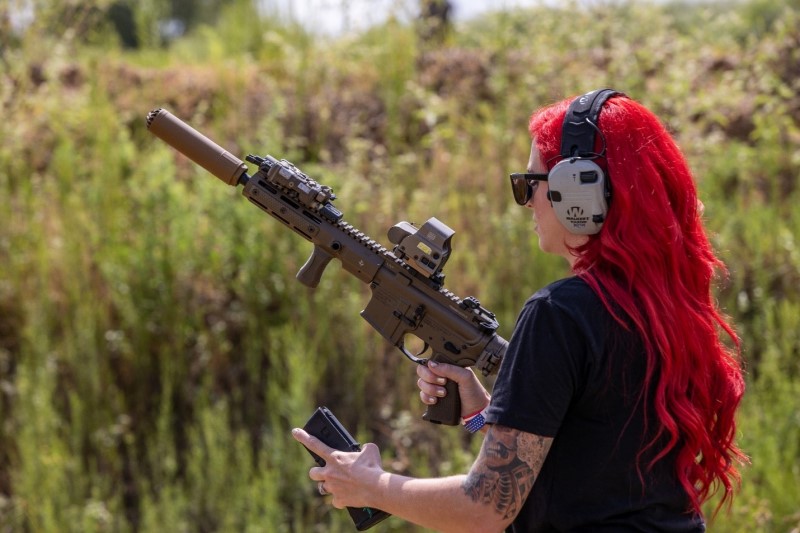
That isn’t true across the board, however, the process in states where sound suppression devices like silencers are allowed by law, the federal law does require some extensive background checking and a tax stamp process for the user to procure a sound suppression device.
The Benefits of a Suppressor
If one can utilize a suppressor or silencer on the end of a 300 BLK, then the cartridge becomes an almost unbeatable option for home defense scenarios. Even without the promise of a sound suppression device on the end of your muzzle, the 300 BLK still makes more sense than most rounds for the home defense situation.
Another X-Factor for the 300 BLK is the type and variety of loads that coincide with close quarters battle. When you can look at the ballistics you see that the terminality of most of these loads is incredibly high, while the chance of a second hit after hitting an initial target are quite low.
The Benefits of a Larger Bullet
The combination of lethality in the first hit instance, and minimization of lethality in the second potential hit instance makes the 300BLK quite a contender for close-quarter combat where residential wall structures could be a factor in mitigating second target hit concerns.
The 300 BLK also boasts a longer, heavier, larger diameter projectile that allows you to add bulk lead on target without sacrificing much in the way of terminal ballistics as you will likely be firing upon a target within a 5-10 yard range or closer with inside-the-home shots.
The close confines of a residential building means that the long-range precision or heavy ballistic nature of most of the rounds one would consider using for stopping power in an AR-15, are rendered as overkill.
Therefore the 300 BLK becomes an interesting option, even if it might be seen as somewhat anemic when placed against larger caliber or heavier powder capacity cartridges. One can still expect excellent lethality in close spaces with a lot of lead on target, and a large wound cavity, as well as sufficient ballistics, without some of the downsides of having a higher velocity or smaller projectile involved in the scenario.
Can everyone get the same value from the .300BLK?
Clearly, as the sound suppression capabilities of the 300 BLK are so good, those that don’t have access to a sound suppression device could be seen as having a distinct disadvantage while using the 300 BLK. So, if you are comparing apples to apples, those without a silencer or suppressor will not be able to take as much advantage out of the 300 BLK.
Similarly, because of the SBR or short-barreled rifle regulations in the United States those that don’t want to use a pistol variant with a moderately sized Barrel, might lose some functionality to “legally” shoulder a firearm that shoots 300 BLK natively.
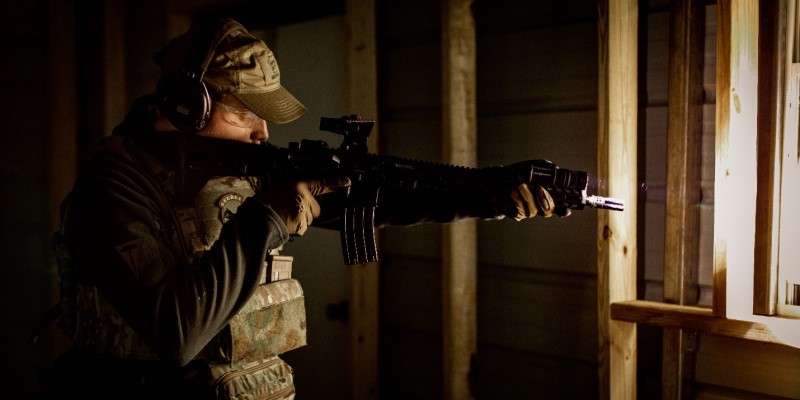
In most self-defense scenarios inside of the residence, this author does not believe that this will become an issue, regardless of how the firearm is registered. However, it isn’t prudent to acknowledge or promote “unlawful” behavior, including shouldering a firearm not registered to be a shoulderable SBR type firearm. While we would never advocate breaking laws, your mileage may vary.
Even given those glaring issues, still not much is lost from the 300 BLK when being used in a defensive scenario inside of a residence. That is because there are so many inherent benefits of utilizing such a cartridge for that need.
Optimization of the 300 BLK
Below we will cover some of the ways to optimize the inclusion of a .300 BLK in a CQB type of scenario, including optimizing it for use in a home defense scenario. Bear in mind, not all residences or homesteads or other residential property types will all benefit from the point 300 BLK over something else.
With the inclusion of some of the newer cartridges on the market including standouts like the .300 Ham’r or the 6.5 Grendel, or the 6.8 SPC, or even the tried and true .223 or 5.56, many of the variables that one should consider when choosing a cartridge for home defense use depend on the specifics that you will encounter in that situation. Not all homes or sets of tactical needs are the same, obviously.
For instance, the 6.5 Grendel or the 6.8 SPC or even the .300 Ham’r would all be better options if intermediate range accuracy is incredibly important in addition to needing adequate ballistic potential in short spaces. Such might be the case on a large property where coyotes or other predatory animals may come into play, more often than, say, a home invader.
The Multiple Uses of 300 BLK
The same may be true for those who want to dedicate a single rifle to a multi-use case scenario. While the .300BLK is significantly adequate for intermediate game sized animals to ranges up to about 225 yards, it may not be as accurate or as perfectly suited as some of the above-listed contenders.
So, for those who may prioritize hunting over home defense use may find benefits in utilizing multiple upper receiver conversions, or choosing a different cartridge instead of the .300 BLK.
All that said, while any of the above rounds could easily be used for home defense purposes, none of them have the same benefits of sound reduction capabilities, second hit probability reduction, or custom tailoring in the velocity ranges that the .300BLK does.
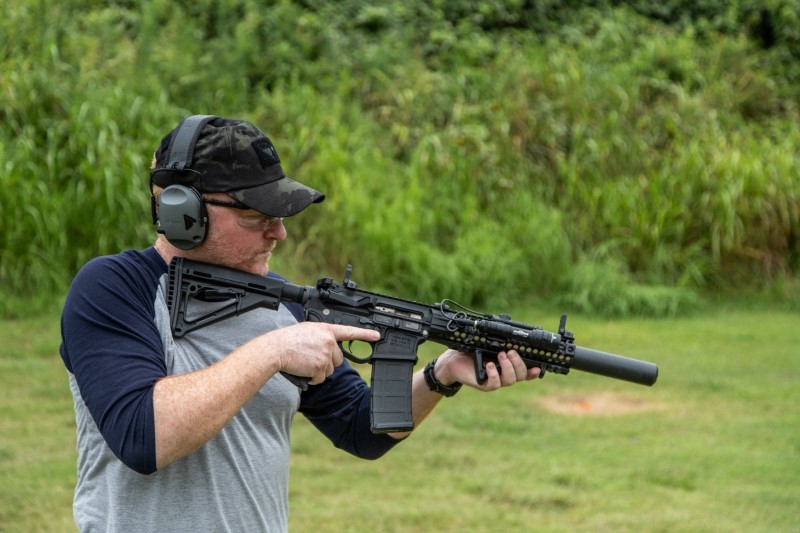
In those arenas, it is the champion. There is no other cartridge that balances that harmony of those three variables so elegantly as the .300BLK.
And, for many, these three variables are the defining factors for a close quarter battle rifle, or a home defense scenario “ultra-gun” which de-prioritizes “over-lethality” in favor of prioritizing minimizing friendly fire concerns, while improving quality of life for the user, and still delivering a payload capable of dispatching a target in a single shot.
How to deploy a .300BLK solution in the home defense scenario
First, while the 300 Blackout is incredibly versatile, you’ll negate most of the benefits for the cartridge in a CQB scenario, by stretching the limits of its versatility, e.g., loading it to supersonic velocities. The 300 Blackout really is custom tailored to user efficiency, ballistic efficiency, and stealth.
Just because it can be fired as a supersonic round doesn’t mean it should be in a close-quarters situation. This is especially true when there are realistic needs to mitigate second hit potential or minimize wall penetrations because of friendly fire concerns.
What does the ideal 300 Blackout rifle solution look like? If you consider the idea of fighting in a confined space, you want to be able to maneuver, and yet you also want to have the power of using a rifle platform.
These two concepts don’t normally cohabitate. Rifles are large, they’re hard to move around with inside of a residential building. Hallways, furniture, Corners, architecture, and other variables come into play. With regards to mobility, especially when you need to be able to clear a building completely: mobility trumps most other variables.
Ideally you will be working with a rifle that utilizes a shorter barrel. This is particularly well-suited for the 300 Blackout because the round in a subsonic format, especially when putting a muzzle device like a sound suppressor on the end of the barrel doesn’t overtly require a long barrel to stabilize the projectile.
Why the SBR is King
We talked briefly about the idea of an SBR style rifle, and this fits perfectly within the realm of building a 300 Blackout for home defense purposes. But, short of being able to attach a tax stamp to a rifle build, one might get pretty good returns from a 16-inch barrel.
If you can minimize the overall length of the rifle, all things considered, a 16-inch barrel without a sound suppressor is quite reasonable in a 30 to 40 inch hallway. Of course, you want to minimize anything hanging off the firearm if you can help it.
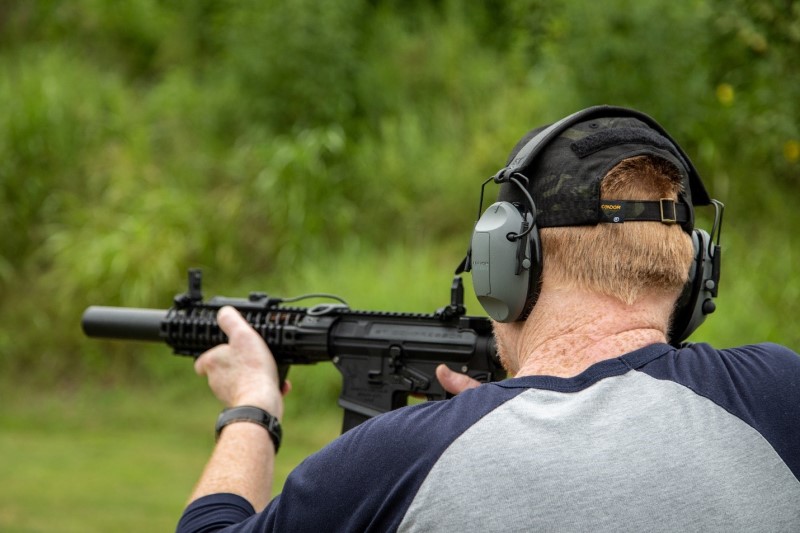
This isn’t necessarily a practical how-to guide on picking accessories or add-ons or optimizing the 300 Blackout as a home defense rifle, so we’ll spare you the details of the specifics regarding accessories.
However, in a general sense, this should serve as a good reminder as to the benefits that come inherently when focusing on a core set of values that can be brought about by a particular cartridge.
In this case the AR-15 is made better when attempting to focus on a goal of home defense or home protection, if you utilize the core foundation of the 300 Blackout. We’ll trust that you, the reader will be able to pick the most effective add ons and accessories as well as a strong mix of component parts.
Double Stamp It
Ideally, you’ll be able to double tax stamp this build and get a shorter barrel – something between 10.5” up to 14”, and put on the end of it, a fantastic sound suppression device. For many readers of this article, such a setup is not going to be practical.
So, while mobility is incredibly important, so is being able to keep a lean profile and avoid extraneous accessories that may not serve the purpose in a defensive situation inside of a residential building.
In the basic sense, this means, that because you aren’t responding like law enforcement might be to a home invasion, adding a sling or a laser or any other device that may not make practical sense in the heat of the moment in a defensive scenario, may not be applicable.
That isn’t to say an experienced, well-practiced shooter couldn’t take advantage of a two-point sling or a laser or some other optical device in addition to a primary reflex optic or iron sights, but rather that it may not be necessary, or serve as a primary way to help dispatch a threat quickly.
In Conclusion
One cannot stress the importance enough, of having incredibly reliable magazines and a bullet-proof bolt and carrier and gas system build. While these aren’t the sexiest components, per se, they really do go the extra mile to ensure a proper outcome for you in a home defense close quarters battle scenario.
One might also seriously consider a stand-up red dot type optic that allows quick acquisition of the target and quick deployment of a payload. Pairing that with a trigger that works for the individual user and having the right type of loads built to ensure you are meeting the threat you expect to see in the middle of the night, will be incredibly important.
In the end, how you build your specific 300 Blackout is less important than the decision being made that 300 Blackout is the desired cartridge for your home defensive needs (or a substantially similar cartridge).
We believe an exceptionally strong argument should be made for the 300 Blackout on the AR platform as a home defense weapon. It offers a strategic and tactical enhancement over many other options you could otherwise employ because of the nature of the cartridge, and its inherent balance and benefits when it comes to being stealthy, reliable, and “lethal enough”.
When you look at it from the lens of producing all the right outcomes while offering significant Improvement in user quality of life, it’s hard not to argue in favor of the .300 BLK for such a situation.
[Note: This was a guest post.]
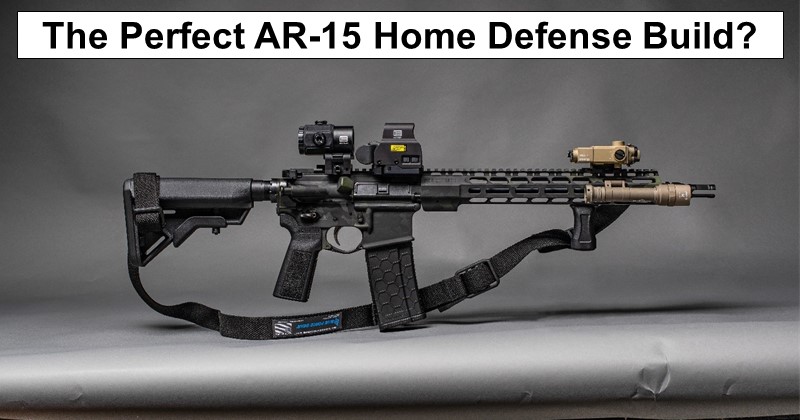
Leave a Reply